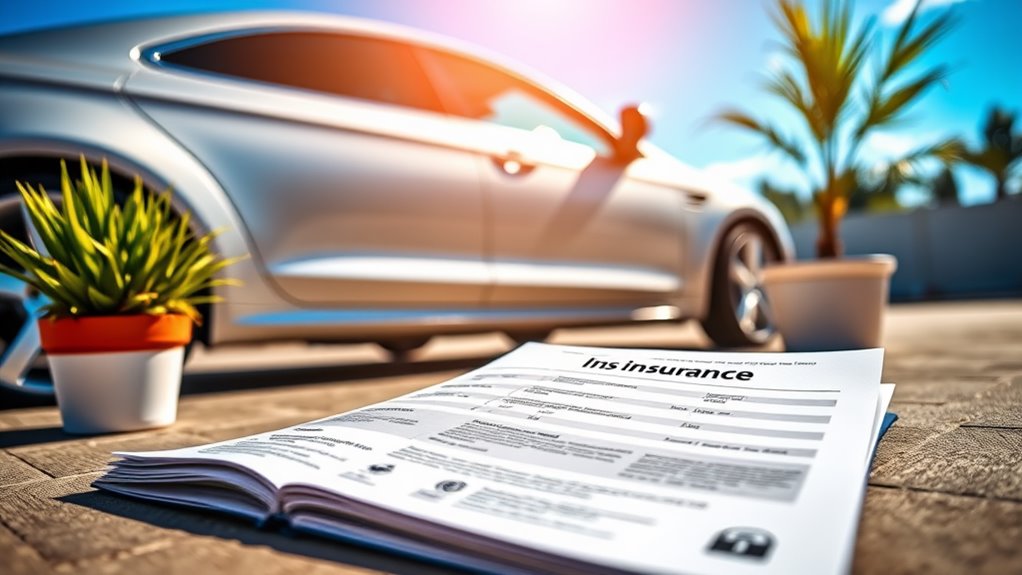Maneuvering uninsured motorist coverage can feel like trying to solve a Rubik's Cube blindfolded. It's vital to grasp your state's requirements and assess your personal risk to avoid potential pitfalls. Comparing insurance providers isn't just about price; financial stability and customer satisfaction matter too. So, how do you guarantee you're adequately protected without overpaying? Let's explore some essential tips to help you make informed decisions.
Key Takeaways
- Understand your state's specific requirements for uninsured motorist coverage, including mandatory limits and types of protection available.
- Assess your personal risk factors, such as driving habits and local uninsured driver rates, to tailor your coverage effectively.
- Compare insurance providers by checking their financial stability and customer satisfaction ratings to ensure reliable coverage.
- Regularly review your uninsured motorist coverage limits and deductibles to align them with your overall liability protection and vehicle value.
- Consider additional options like Underinsured Motorist coverage and Uninsured Motorist Property Damage for enhanced financial security against accidents.
Understand Your State's Requirements

When maneuvering uninsured motorist coverage, it's crucial to understand your state's specific requirements, as they can greatly impact your insurance decisions.
Most states mandate auto liability insurance, with over 20 requiring uninsured motorist (UM) coverage. Each state has different minimum limits and types of coverage, such as UM Bodily Injury and UM Property Damage. In Michigan, for example, drivers are required to carry certain levels of no-fault coverage as part of their auto insurance policy.
Most states require auto liability insurance, with over 20 also mandating uninsured motorist coverage, each with varying limits.
If you live in a state like Maryland or Massachusetts, you must carry UM coverage, while in others, it's optional. Knowing your state's laws helps you avoid penalties, like fines or license suspension. Additionally, states requiring uninsured motorist coverage offer varying levels of protection, making it essential to research your local laws.
Additionally, higher UM limits provide better protection but may increase your premiums. Be proactive in understanding these nuances to make informed choices regarding your coverage.
Assess Your Personal Risk
Understanding your state's requirements lays the groundwork for evaluating your personal risk with uninsured motorist coverage.
To properly assess your risk, consider the following factors:
- Prevalence of Uninsured Drivers: Nearly 14% of drivers are uninsured, which can greatly impact you.
- Location: Urban areas often have a higher rate of uninsured drivers, elevating your risk.
- Driving Habits: If you drive aggressively or frequently, you're more likely to encounter uninsured motorists.
- Demographics: Certain socioeconomic factors may increase your vulnerability to accidents with uninsured drivers.
Compare Insurance Providers
As you navigate the options for uninsured motorist coverage, comparing insurance providers becomes essential to confirm you're making an informed choice.
Start by evaluating the financial stability of potential insurers through ratings from agencies like AM Best. A strong financial history reassures you that claims will be handled efficiently.
Next, assess customer service through independent surveys, noting the importance of robust digital tools for policy management and claims filing. Look for companies with high customer satisfaction ratings, as this reflects their reliability.
Finally, consider third-party evaluations to get an unbiased perspective on insurers' performance.
Review Coverage Limits and Deductibles

Comparing insurance providers sets the stage for your next step: reviewing coverage limits and deductibles. Understanding these elements is essential for adequate protection.
Here are four key points to take into account:
- Match Limits: Align your uninsured motorist (UM) coverage limits with liability limits for consistent protection.
- Evaluate Deductibles: Be aware that uninsured motorist property damage (UMPD) may have a deductible, unlike uninsured motorist bodily injury (UMBI) coverage.
- Assess Vehicle Value: Verify UMPD limits reflect your vehicle's value, especially if you lack collision coverage.
- Weigh Financial Risk: Higher deductibles can reduce premiums, but weigh the potential out-of-pocket costs against your risk tolerance.
Regularly reviewing these factors helps safeguard your assets and guarantees you're adequately protected.
Consider Additional Protection Options
While you may already have uninsured motorist coverage, considering additional protection options can further safeguard your financial well-being.
Explore Uninsured Motorist Property Damage (UMPD) if it's available in your state; it covers vehicle repairs if you're hit by an uninsured driver. Additionally, look into Underinsured Motorist coverage (UIM) for protection against drivers with insufficient insurance.
Consider Uninsured Motorist Property Damage (UMPD) and Underinsured Motorist coverage (UIM) for added protection against uninsured and underinsured drivers.
These options not only mitigate your financial risks but also enhance your overall policy effectiveness. Don't forget about other coverages like collision and medical payments, which can complement your existing coverage.
Always assess your local regulations and compare policies from different providers to find the best fit for your needs. Evaluating these options guarantees you're adequately protected against unforeseen circumstances.
Conclusion
Maneuvering uninsured motorist coverage is like steering a ship through fog; having the right tools and knowledge can keep you safe. Just as a captain checks the weather before setting sail, you should understand your state's requirements and assess your personal risk. By comparing providers and reviewing your coverage, you're setting a sturdy course. Remember, adding underinsured motorist coverage is like packing extra supplies—essential for unexpected storms. Stay informed, and you'll maneuver the road ahead with confidence.

















